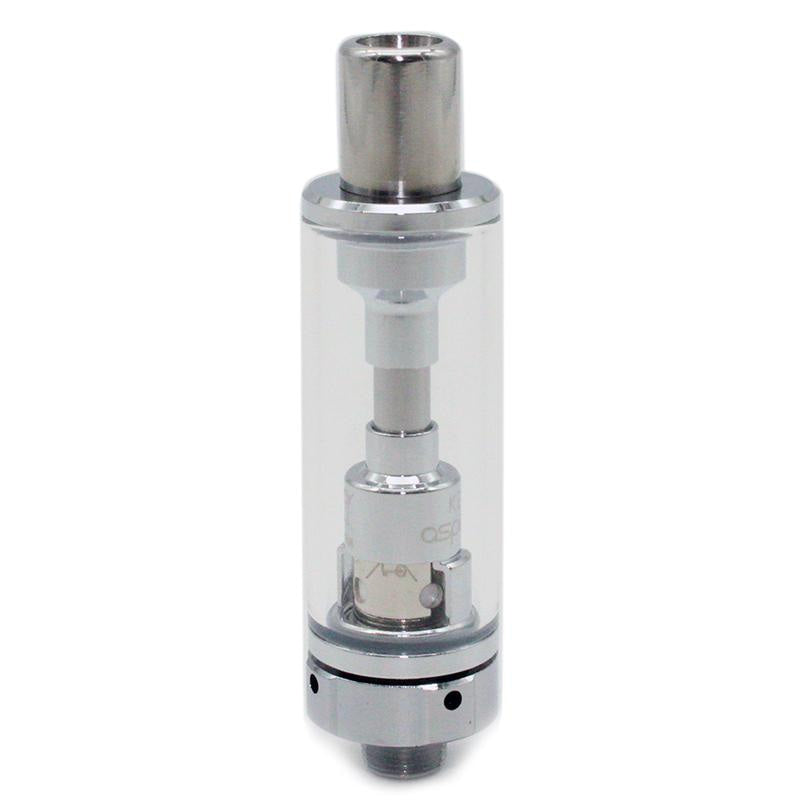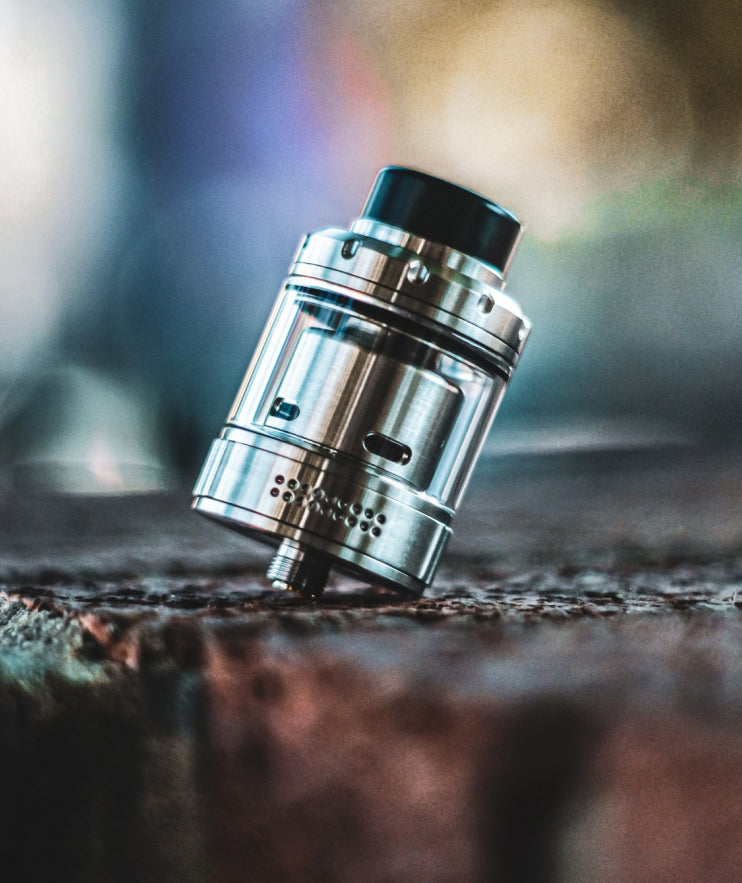Nicotine salts started out seemingly like a fad in 2018, but the vaping world has come to accept this alternative form of e-liquid for the options it provides to newbies and veteran vapers alike.
Now that we know they aren’t just a passing trend, it’s time we dedicate a Vaping 101 guide to nicotine salts. Whether you’re starting out vaping or someone who’s tied to the traditional ways of vaping, read on and you just might learn something that could prove to be valuable to your vaping lifestyle.
What Are Nicotine Salts?
To avoid any confusion, let’s get this out of the way immediately: nicotine salts have zero relation to the popular seasoning you put on your food. Although chemically, they are a salt, your vape juices won’t taste salty nor will you suddenly increase your daily sodium intake if you use nicotine salts.
In the case of nicotine salts, they’re the result of nicotine (the base) being mixed with an acid. They are actually fundamentally the same as the nicotine found naturally in a tobacco leaf.
What Makes Nicotine Salts Different From Traditional E-liquids?
Traditional e-liquids have “freebase” nicotine. This is the purest form of nicotine, isolated from any other element usually present with nicotine. This is also what cigarettes contain.
Freebase nicotine was the brainchild of Philip Morris’ research into making more effective cigarettes back in the 1960s. It is more bioavailable than nicotine in its natural state, which makes freebase nicotine easier for the body to absorb. Mixed with ammonia, this type of nicotine could be delivered in higher amounts in cigarettes for a more addictive experience.
Nicotine, however, has a high pH level (around 7 to 8), which means high alkalinity. This translates to the harsh feeling on your throat when you smoke or vape a lot of it. This is where nicotine salts come in.
The History of Nicotine Salts
Because of how vaping was originally invented as an alternative for smokers who want to quit smoking, it’s only logical that just about every e-liquid uses the same type of nicotine to approximate the buzz-like effect of smoking a cigarette.
However, the average cigarette still contains more nicotine than the average e-liquid. Matching the nicotine levels in your typical e-cigarette with a traditional cigarette generally makes for an unpleasant, rough vaping experience.
Enter Pax Labs, the creator of JUUL. In 2015, they patented a way to make a vape product that would deliver the strong nicotine kick of a cigarette without the burning sensation in the throat that usually comes with smoking through. This would make the idea of switching from tobacco smoking to vaping more enticing for smokers who want to quit but still want the strong nicotine feel.
Pax Labs went back to the basic concept of nicotine salts, but looked for an acid that would mix in well with nicotine to make it as bioavailable as freebase nicotine. Their research led them to benzoic acid.
Benzoic acid in nicotine salts achieves a similar level of bioavailability to freebase nicotine. It also reduces the pH level of the nicotine. In turn, this lowers the alkalinity of the nicotine, resulting in a much smoother vaping experience even with relatively high amounts of nicotine. This also allows for more nicotine to be used even in low-powered vaping devices.
Are Nicotine Salts Safe?
Because we are dealing with substances that we directly inhale, it’s only natural that you express some concern over the safety of this particular version of nicotine. After all, the idea of a more powerful nicotine kick can raise eyebrows, especially for those who want to curb their addiction.
On the most basic level, nicotine salts are no more or no less harmful than freebase nicotine.
There has yet to be any major study done on the health effects of inhaling benzoic acid. What research there is does point to benzoic acid causing mild allergy-like reactions upon contact with skin or the eyes. It might trigger coughing, but benzoic acid, in general, has not proven to be extremely toxic to humans. There has currently been no public case of people suffering adverse effects directly because of smoking nicotine salts with benzoic acid.
What might be more of an immediate concern is the potentially more addictive quality of nicotine salts. There is definitely more nicotine that can be consumed through the use of nicotine salts in vaping. Using them in high-powered vape devices is not advisable.
Although it would take an unreasonably high amount of nicotine (ingesting more than 500 mg in one go) to actually die of nicotine poisoning, it’s better to err on the side of caution. For reference, the strongest nicotine salts can have as much as 50 mg nicotine.
Pros and Cons of Nicotine Salts
Now that you have a general understanding of nicotine salts, we can go over their advantages and disadvantages compared to traditional e-liquids. From there, we can also identify the types of vapers who can get the most out of using nicotine salts.
Pros
- Quick and Powerful Nicotine Kick — Nicotine salts will hit you much faster and stronger than your standard vape juice. It’s the most similar vaping experience to smoking a cigarette, so it’s particularly useful for smokers who are just about to transition from tobacco smoking to vaping.
- Smooth on the Throat — Thanks to the benzoic acid found in popular nicotine salts, vaping high amounts of nicotine won’t burn your throat the way traditional vape juices would at the same nicotine levels. If you’re just starting your vaping journey, nicotine salts aren’t a bad first option if you get turned off by the relatively rougher hit from a standard e-liquid.
- More Concentrated Flavour — Freebase nicotine has a distinct effect on the taste of ordinary vape juices. Nicotine salts don’t have that problem when mixed with e-juices. You will be able to enjoy the full flavours as originally designed by e-liquid makers.
- Easy-to-Use — Nicotine salts are often used with low-powered vaping devices, and these devices are generally no-frills, low-maintenance vape pens that can fit in your pocket. Beginners might find this more to their liking, as they don’t have to worry about fiddling with mods and having to carry around a big rig in public.
- More Affordable Long-Term — Because of the more potent nicotine content in nicotine salts, users tend to consume less e-liquid to get the buzz from vaping than those who vape with traditional e-liquids. Coupled with the fact that nicotine salts are mostly vaped using cheaper, low-powered devices, it’s the budget-conscious vaper’s choice.
Cons
- Limited Availability — Because nicotine salts are considered an alternative, not all vape shops have them in stock. If they do, the supply won’t be as much as it is for standard e-liquids, and there will likely be fewer flavour options, too.
- Constrained Customisation — A huge part of the vaping lifestyle is the customisation. Being able to express yourself through modifying your own vape rig is a culture in and of itself. Nicotine salts users are mostly confined to vape pens and pods, which aren’t fully customisable.
- Compatibility Issues — Standard vape juices can be used with just about any kind of vaping device. Trying to use nicotine salts with a sub-ohm tank would require a decent amount of tinkering if you don’t want your lungs to feel like they are burning.
- No Cloud Chasing — Because you can’t be inhaling too much with nicotine salts, you won’t be producing big clouds. While the casual vaper probably isn’t joining cloud-chasing contests or performing vape tricks, there is still a huge cloud-chaser scene that just won’t find much use for nicotine salts.
When it comes down to it, the choice to use nicotine salts depends on what your vaping goals are. While they certainly have their benefits, they also have their downsides that may not sit well with the vaping lifestyle you’re aiming for. Hopefully, this guide has given you enough information to go on to decide for yourself if nicotine salts suit your specific vaping preferences.



















